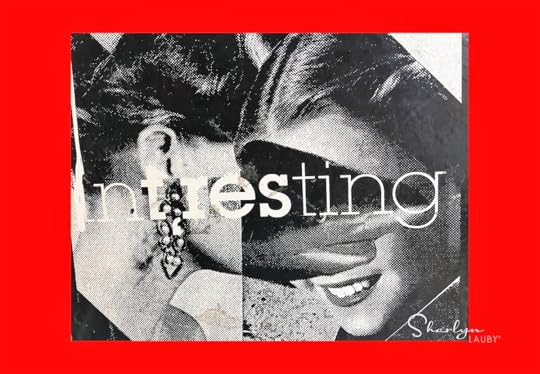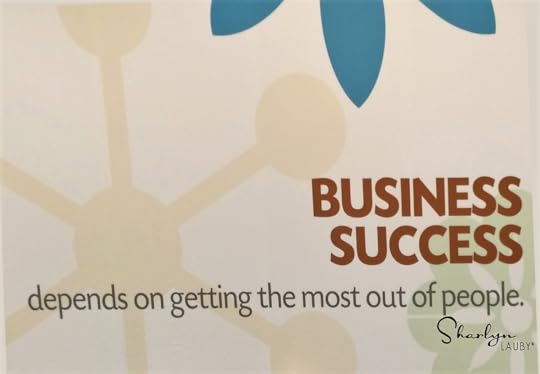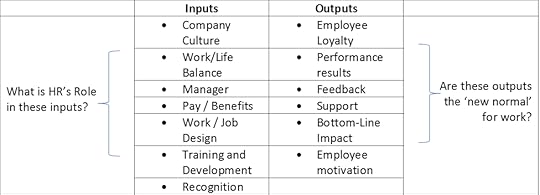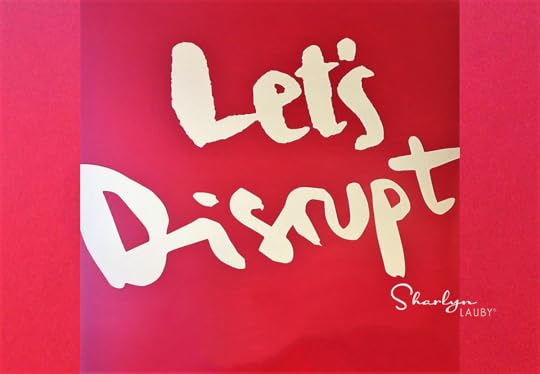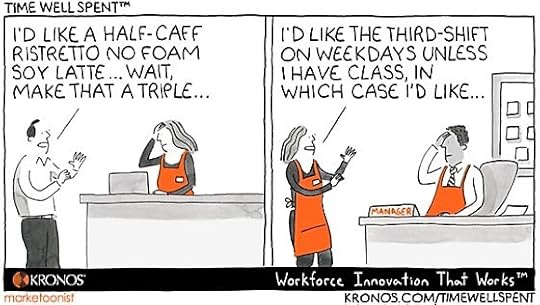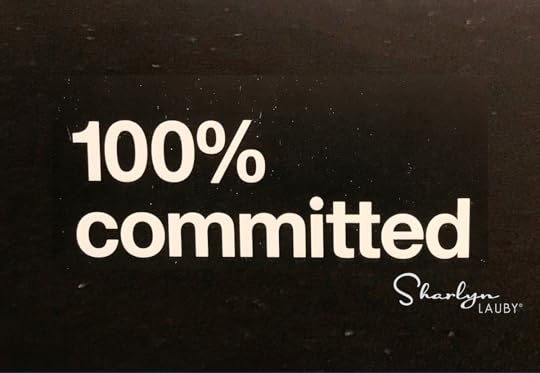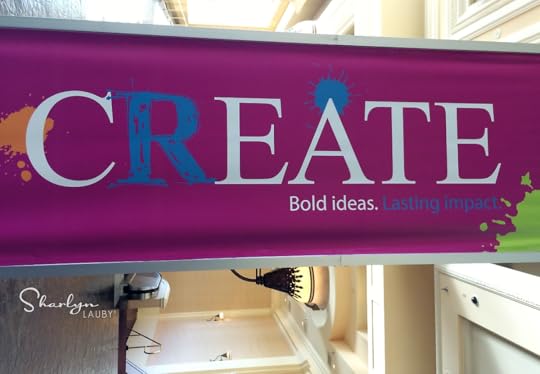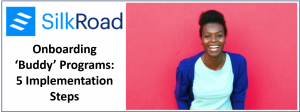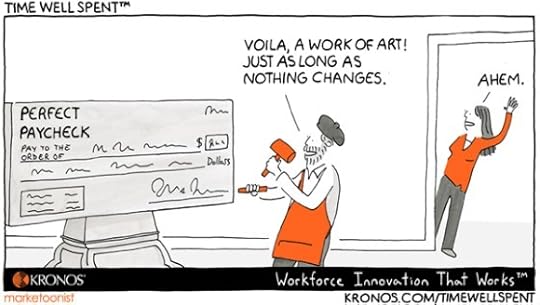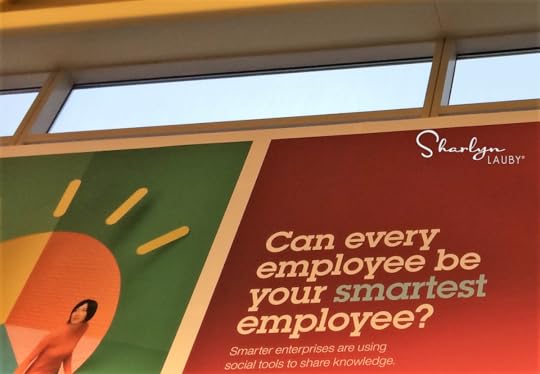Sharlyn J. Lauby's Blog, page 128
October 26, 2017
Professional Development for Learning and Performance Professionals – Ask #HR Bartender
We’ve talked several times about how human resources generalists can develop their career. But what about the specialist functions within HR, like learning and performance? That’s what today’s reader note is about.
I’m currently working in the hospitality industry and would like to eventually move into the learning / training and development department.
I am looking for a cross-training opportunity, however the company policy states that I have to wait 9 months to apply. Are there activities (i.e. books, skills, etc.) I can do in the meantime to improve my skills? My goal is to land an entry level job. Thank you for sparing your precious time to look into my query.
Many organizations ask employees to wait a few months before applying for a transfer or promotional opportunity. I know it can be frustrating, but it’s also an advantage. This is the perfect time to learn about the company, culture, and view processes with a fresh perspective. That way when you do make a move to another department, you already have some organizational knowledge. So make the most of it, because these moments don’t happen all the time.
That being said, there are some things that individuals looking to gain more exposure to the learning and development function can do. Here are five to get you started:
Start reading some blogs focused on learning and development. This list of “The Top 10 Blogs in Learning & Development to Follow” has many of the blogs I follow. Reading blogs doesn’t cost a thing and it can often lead to finding other resources.
Follow a few learning and development hashtags on Twitter. A couple of years ago, HR Marketer published a list of popular L&D hashtags. Also, check out #elearning #mlearning #lrnchat #gamification and #LMS. I have these saved in Twitter and review them for interesting articles and conversation.
Connect with your local Association for Talent Development (ATD) chapter. ATD doesn’t have as many local chapters as the Society for Human Resource Management (SHRM). But they do have chapters in many large cities. It’s also possible that, in smaller cities, they’ve created a special interest group (SIG) inside another organization.
Create a reading list on learning and performance topics. ATD’s Northeast Florida Chapter published a suggested reading list on their website. It’s a good place to start. I’m also a big fan of TD@Work books. They’re short and practical guides with lots of job aids and takeaways.
Get a copy of the ATD competency model. I put this one last for a reason. You can learn a lot about learning and performance through the internet, books, and association meetings. If you’re long-term goal is to stay in the L&D profession, it might make sense to get certified and understanding competencies will be essential.
Pursuing a career in learning and performance can be very exciting and rewarding. The good news is there are many resources to help professionals develop their career. What’s your go-to resource for learning and development information? Let’s start a resource list in the comments.
Image captured by Sharlyn Lauby just off Duval Street in Key West, FL
The post Professional Development for Learning and Performance Professionals – Ask #HR Bartender appeared first on hr bartender.






October 24, 2017
Employee Engagement: Use a Systemic Approach
Employee engagement continues to be a challenge for organizations. I believe two of the reasons that companies struggle with engagement are 1) It’s hard to define and 2) it has a lot of moving parts.
For example, employee motivation is a key driver in employee engagement. That’s why putting out free food, bean bag chairs, and a foosball table doesn’t create engagement. But food and fun can definitely be a workplace perk, which might help toward engagement. The logic being that pay and perks make employees feel that their work is valuable. That connection between the employee’s work and the company creates engagement.
But organizations need to understand if those connections really exist. It makes no sense to develop an employee engagement strategy without understanding the drivers that are impacting engagement in your organization.
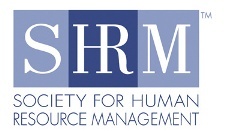 The Society for Human Resource Management (SHRM) invited me to sit in on their virtual Employee Engagement: Influencing Workplace Culture Seminar. This is the second SHRM virtual seminar I’ve taken. The first was Succession Planning: Preparing for Future Talent Needs. I really like the virtual format. I’m able to learn in the comfort of my home office – comfy clothes, tasty snacks, no long drives home in traffic. You get my point. And the programs are eligible for SHRM recertification credits.
The Society for Human Resource Management (SHRM) invited me to sit in on their virtual Employee Engagement: Influencing Workplace Culture Seminar. This is the second SHRM virtual seminar I’ve taken. The first was Succession Planning: Preparing for Future Talent Needs. I really like the virtual format. I’m able to learn in the comfort of my home office – comfy clothes, tasty snacks, no long drives home in traffic. You get my point. And the programs are eligible for SHRM recertification credits.
This seminar focused on developing an employee engagement strategy. But before we dove into strategy development, we spent some time talking about the definition of engagement. We’ve talked about this before. Defining engagement isn’t as easy as it sounds.
One way organizations can create a definition of engagement is through the use of systems thinking. Think about engagement as a system of inputs and outputs.
Inputs include the company culture and company programs like recognition, professional development, compensation, etc. Traditionally, human resources plays a role in developing and maintaining many of these inputs. Organizations need to decide how much or how little a role HR will play.
Outputs are those results that can occur when the right inputs exist. Outputs include the employee’s high performance, loyalty, and motivation. Organizations need to decide what outputs are important and the investment they’re willing to make in order to get them.
Once companies define engagement, they can start working on an employee engagement strategy. The goal of an employee engagement strategy isn’t to get rid of disengaged employees. Hate to say it, but when two out of three employees are disengaged, that’s not practical. Organizations can’t afford it.
The more practical approach is to consider engagement in a three-tier approach with the goal being to move employees through the tiers.
Transactional / Surface Level Engagement – This is the base level of engagement. These are the employees that appear engaged and say all the right things, but they’re still looking for the WIIFM (What’s in it for me?). They’re not disengaged. But they could easily become that way if the company doesn’t do something.
Emotional / Feeling Engagement – At this level, employees are committed to organizational goals. They care about the work and the company. In my opinion, this is the type of engagement that most organizations are looking for. Employees are proud of their work and they are productive.
Intellectual Engagement – Organizations with high levels of intellectual engagement also have high levels of transparency and employee development. Employees are thinking about whether their manager is engaged. They’re thinking about their long-term career needs and whether the organization is able to deliver.
I will admit, I think intellectual engagement is a tough level of engagement to achieve. But it can be done. It involves big workplace changes, starting with management. There are two primary areas of focus:
Work environment. Organizations want to create a work environment that allows managers to build positive working relationships. Engagement requires relationships, collaboration, and teamwork to achieve high performance and results.
Communication. Managers need to be comfortable and skilled in giving and receiving feedback and coaching. This directly impacts the ability to accomplish the optimal work environment.
Organizations that want to address employee engagement have to start with defining it. My takeaway from this seminar was that maybe, instead of trying to create a single definition of employee engagement, it makes more sense to think about it in a tiered approach. Regardless, employee engagement involves managers and the work environment.
No organization can expect engagement if they’re not willing to make investments in those things.
P.S. If you want to learn more about employee engagement, you can check out this seminar on the SHRM Education site. They offer virtual and in-person programs around the country. There are still opportunities to attend programs in Q4.
Image capture by Sharlyn Lauby after speaking at the SHRM Annual Conference in Las Vegas, NV
SHRM logo used with permission.
The post Employee Engagement: Use a Systemic Approach appeared first on hr bartender.






October 22, 2017
Employee Coaching Works When It’s a Part of Company Culture
I ran across an article in Chief Learning Officer Magazine titled “7 Ways to Create a Coaching Culture”. It’s a good read that you might want to check out.
There’s one sentence in the article that I want to elaborate on today. “The magic of a coaching culture is that it is infectious.” I get the point of the sentence. I’m just not sure that it’s quite as simple as the sentence implies.
Building and maintaining a company culture is a lot of hard work. Company cultures should be distinct. They should be both open to change but not easily changed. What I mean by that is, company cultures need to be able to change with the needs of the business. Company cultures shouldn’t be easily swayed. Then they would change too much. It’s a delicate balance but that’s what makes company cultures so valuable.
When it comes to employee coaching, I believe that organizations want the results. There are moments when I’m not completely convinced they want the work that it takes to get there. Organizations want high performing employees. No doubt about it. The question is, do they want the coaching process.
For coaching to truly become part of the company culture, there are a few things they need to do:
Demonstrate the process is just as important as the results. Coaching will not be infectious if employees love the results but hate the process. They’ll view it as drudgery or a necessary evil. HR and senior management will have to show how the process is equally important. One way to do that is with stories about how the process was valuable.
De-emphasize the chain of command. A coaching culture means that employees can coach and be coached at every level and in any department. Employees can coach managers. Managers can coach outside of their department. This blows up the traditional chain of command. And organizations have to be very comfortable with that approach.
Build coaching into the talent acquisition process. For coaching to become a part of culture, it needs to be talked about on company career sites and discussed during interviews. Candidates should be asked interview questions about getting and giving feedback. New hires should receive training during orientation about coaching.
Give all employees coaching skills training. Speaking of training, when organizations create coaching cultures then coaching isn’t just another program. It’s a program that drives what the organization does – how they make decisions, solve problems, etc. I can’t imagine any program that’s considered part of company culture not being trained (and getting the resources to make training happen).
Creating a coaching program isn’t the same thing as creating a coaching culture. Don’t get me wrong, creating a coaching program is a good thing and will bring tremendous value to your organization. However, creating a coaching culture is even better for the reasons I mentioned above:
Candidates understand expectations before they take the job.
New hires are given training to be successful.
Open communication happens at every level of the organization.
The entire process is valued, not just the end result.
If we think of the other components of our company culture, my guess is many of them follow the same criteria.
Image captured by Sharlyn Lauby at the BlogHer conference in Orlando, FL
The post Employee Coaching Works When It’s a Part of Company Culture appeared first on hr bartender.






October 20, 2017
Personalization Creates Engagement – Friday Distraction
Years ago, I worked for a boss that had a daily habit of three Venti Starbucks. Early in the morning, he would walk by my office and if I was there, he would stick his head in the office and say, “Let’s get some coffee.” I attribute some of my fondness of Starbucks to these meetings. More importantly, I realized if I came into work early, I got uninterrupted quality time with my boss.
Months later, I left that job and moved to Fort Lauderdale. (No, I didn’t leave because of my boss.) I discovered a Starbucks on my way to work, so I stopped in. The baristas were fabulous. They knew customer’s names and their favorite morning beverage. Regular customers would walk through the door and the barista would say “Good morning!” and immediately start making their favorite drink.
I decided to do what I now call “The Starbucks Experiment”. I went into the same store every day to see how long it would take for the barista to know my name (which is unusual) and my drink (which I intentionally made unusual). The result? In less than two weeks, they knew my name and drink.
That’s my takeaway from today’s Time Well Spent from our friends at Kronos. Personalization – whether it’s your coffee order or your schedule – makes people feel good. It makes them feel special. Organizations have an opportunity to increase employee morale and retention by adding some personalization. Here are a few things managers can do:
Get to know employees. I’ve heard more than my fair share of employee complaints that managers just don’t pay attention to what’s going on in employee’s lives. And if the manager were more attentive, they wouldn’t have scheduled an employee on the day or shift that they did. Example: scheduling an employee on their graduation day or wedding.
Put a fair scheduling process in place. And communicate the process to employees. If the organization is going to have scheduling procedures, make them fair, apply them consistently, and make sure employees know the rules. Employees get frustrated when rules are put in place only to hear about “exceptions”. It can appear like favoritism.
Give employees flexibility. Even when the company has scheduling policies, emergencies happen and employees need to make changes. Consider giving employees the ability to swap shifts with their co-workers. Today’s technology makes this very easy to do. Allowing shift swaps gives employees the ability to personalize their schedule.
Employees want to feel that they have control over their careers, that includes their work schedule. Managers can make more of an effort to focus on personalization, and that’s important, but it’s possible that employees will need a Plan B. Organizations can give them the option to personalize and create a win-win.
The post Personalization Creates Engagement – Friday Distraction appeared first on hr bartender.






October 19, 2017
A New Employee Benefit: Social Justice PTO
At this year’s WorkHuman Conference, pioneered by Globoforce, I learned about a new employee benefit called social justice PTO. We’re familiar with the concept of PTO (paid time off). Instead of employees having vacation days, sick days, etc., they have one bank of time to use as they choose.
Social justice PTO is paid time off but for social issues, like protests or marches. Some organizations are allowing employees to use their existing PTO banks for social justice activities, but others have created more specific policies. Here are a few articles worth checking out:
Could “Social Justice Benefits” Be the Newest Employment Trend? (Fast Company)
‘Social Justice PTO’ is the hot new perk for companies with activist employees (Business Insider)
“Social Justice Benefits” Could Be the Next Big Employee Perk (LearnVest)
One company that’s at the forefront of social justice PTO is retailer Patagonia. During the conference, the speaker mentioned that Patagonia allows employees one paid social justice day off per month AFTER they attend a training session on how to be a good activist.
Regardless of your political leanings, I can see this being something that organizations need to pay attention to. A new survey conducted by Harris Poll for Glassdoor indicated that 75 percent of Millennials expect their employer to take a stand on important social issues affecting the country. Those issues include immigration, equal rights, and environmental change.
If the survey data is correct, then companies who take a stand on important social issues could have an advantage finding and hiring the best talent. Employees might have a higher level of engagement because they feel the company shares their social values – or, at least, support them.
I realize this might be different from what we’ve always expected in a business setting. But times are changing. Along with roles and responsibilities. According to the Society for Human Resource Management (SHRM), corporate social responsibility (CSR) is part of the HR competency model. That means that HR pros need to understand and guide the organization through the social justice PTO process. HR doesn’t have to necessarily establish the company’s CSR initiatives, but they need to help the organization realize that CSR is important and has an impact.
In today’s business world, employers cannot sit on the fence. Well…they can, the question is will it benefit them. More importantly, will it benefit their current and potential employees.
Image captured by Sharlyn Lauby on the streets of South Florida
The post A New Employee Benefit: Social Justice PTO appeared first on hr bartender.






October 17, 2017
Contractor Makes Stupid Mistake At a Client Site – Ask #HR Bartender
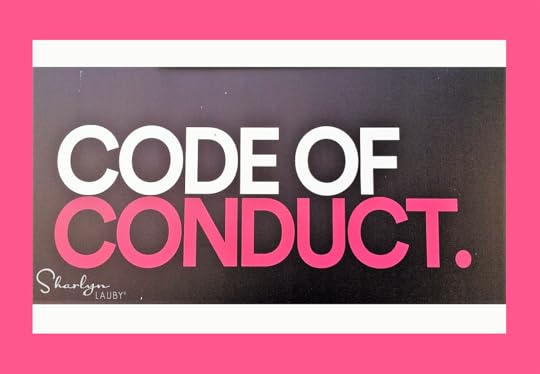
Many organizations use contractors and freelancers to get work done. According to the Freelancers Union, freelancers make up 35 percent of U.S. workers and earned close to $1 trillion dollars last year. It’s important for companies to properly manage a contingent workforce. Especially when they make a mistake. Today’s reader note shares a freelancer’s situation:
Earlier this month, I got a contracting gig with a respected organization. It’s a good assignment in the low $100’s. In my excitement, I sent a note to a friend, who also happens to work for the company. The language in the note was ‘locker room’. It was a stupid mistake.
I was called into HR last week, and now I’m wondering what’s happening. I owned up to it and was upfront about everything. I’ve also been letting the HR rep know about my efforts to attain additional work assignments. I don’t want the company to think I’m not doing anything but sitting around sending bad emails. I don’t know what’s going to happen, and have no idea as to the precedent.
Apart from being upfront about everything and working hard, what else can I possibly do? Thank you.
I asked our friends at Foley & Lardner LLP if they could help us understand more about managing contractors and freelancers. Larry Perlman is senior counsel with the firm. He advises clients on a wide array of personnel-related matters including employee discipline, wage and hour, and disability accommodation.
Also, please remember that Larry has a regular full-time job as a lawyer and he’s doing this to give back to the profession. His comments should not be construed as legal advice or as pertaining to any specific factual situations. If you have detailed questions, you should address them directly with your friendly neighborhood labor and employment attorney.
We don’t know what “locker room” means in this situation. But it might be logical to think it falls under the company’s code of conduct. What’s a “code of conduct” policy and why should organizations consider having one?
[Perlman] A code of conduct gives an employer an opportunity to lay out its expectations for employee behavior. For example, such policies may address issues like:
Professionalism,
Ethical and legal obligations,
Harassment,
Treating each other with respect in the workplace, and similar concerns.
Having such policies in writing helps an employer set workforce expectations, and it’s always optimal to be able to point to a written policy when disciplining an employee for violation of a particular rule.
However, as with other workplace policies, it is not enough to just have a neat-looking written document. Organizations must be prepared to enforce their policies in a consistent, non-discriminatory manner.
Let’s talk about the contracting aspect of this situation. Are organizations obligated to hold freelancers/contractors/consultants to the same code of conduct standards as regular employees? Why or why not?
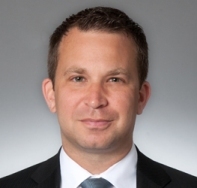 [Perlman] Employers must be careful when dealing with independent contractors. If an employer exercises too much control over the working conditions of a contractor (or a contractor’s employees) that contractor may end up being deemed an employee under wage and hour, tax, and other laws.
[Perlman] Employers must be careful when dealing with independent contractors. If an employer exercises too much control over the working conditions of a contractor (or a contractor’s employees) that contractor may end up being deemed an employee under wage and hour, tax, and other laws.
For that reason, when dealing with bona fide independent contractors, employers should be cautious in applying employee work rules to those individuals. However, that doesn’t mean that you can’t hold contractors to certain requirements. For example, you can (and should) ensure that your employees, clients and visitors are not subject to harassment by a contractor.
Does it make sense for contractors to have their own personal “codes of conduct”? And is this something they could possibly share with clients?
[Perlman] Absolutely. In fact, employers may require that contractors (and contractors’ employees) adhere to certain standards.
If an organization holds contingent workers to the same standard as regular employees, when should contractors find out about those rules and policies?
[Perlman] Organizations should be cautious in applying identical policies to their employees and contractors. Policies applying to contractors should be discussed at the time of contracting.
As a best practice, any particular conduct requirements should be referred to in the contractor’s written agreement. One of the mistakes I see companies make is handing an “employee handbook” to someone they’ve classified as an “independent contractor”. For what should be obvious reasons, that is not a good thing to do.
Hypothetical situation: A contractor violates the company’s code of conduct. Are they subject to the same consequences as a regular employee? Why or why not?
[Perlman] When dealing with independent contractors, companies shouldn’t “discipline” them the same way they would an employee. Instead, the remedy for an independent contractor not complying with company expectations is to terminate – or consider terminating – the contract.
In this scenario, the contractor has spoken to HR. If a contractor has questions about the status of their contract, who should they talk with – HR or the department that’s using their services?
[Perlman] Each organization’s division of responsibility differs, so it is difficult to make generalizations regarding ‘who’ to contact in a particular situation.
That said, as a rule of thumb, if a contractor has questions regarding the status and terms of their contract, they should raise those issues with the appropriate business people for whom they are providing services. If the contractor has questions or concerns regarding one of the organization’s employees, he/she may consider going to human resources.
My thanks to Larry for sharing his knowledge with us. If you want to stay on top of labor and employment law issues, be sure to sign up for Foley & Lardner’s electronic newsletter or follow one of their blogs.
As more organizations look to contractors and freelancers to help them accomplish their goals, it’s necessary to understand the legalities. Not just having a written agreement. Managing contractors is different and managers need to learn how to manage a freelancer.
Image captured by Sharlyn Lauby on the streets of Fort Lauderdale, FL
The post Contractor Makes Stupid Mistake At a Client Site – Ask #HR Bartender appeared first on hr bartender.






October 15, 2017
Onboarding Is Your Foundation For the Employee Experience
Organizations understand that the onboarding process is important. I think the challenge is deciding what should be included. Companies grapple with balancing the “welcoming employee experience” part with the “legal and compliance” piece.
During this year’s SilkRoad Connections Conference, Madeline Laurano, co-founder of Aptitude Research Partners, shared that an organization’s onboarding strategy should define the two touchpoints in the employee experience: pre-hire and post-hire. Within those two touchpoints, organizations should consider three key activities: skills, process, and technology. I immediately thought of a table.
While my example above isn’t complete, organizations could use a grid or table to confirm that their onboarding process does provide a complete and adequate touchpoint for employees both pre- and post-hire. If it doesn’t, they should look for ways to make the process complete.
One of those options might be to implement a technology solution. Laurano specifically addressed this. “If organizations want to improve the onboarding experience they need to view technology differently. Which means they need to buy technology differently.” Here are a few specific examples from the session to illustrate how organizations can use technology to make the most of the onboarding experience:
Make the process intuitive. Laurano mentioned that half of companies today are using 2-3 different onboarding solutions. Some solutions for just benefits. Others exclusively for Form I-9 compliance, and then others for mentoring, communication and teambuilding. Instead of multiple systems and platforms, think about a single onboarding solution that will provide consistency.
Use valuable and varied communication methods. Communicate to candidates and new hires in ways they are familiar – mobile and social are still very popular, and that’s not going to change. Use the right medium for the right message. There are some things employees expect to sign, so paper isn’t always inappropriate. Incorporate video messaging to get candidates engaged with the organization.
Make the experience multi-directional. Organizations and employees expect onboarding to be a learning experience. The employee is learning about the company (and vice versa). Onboarding needs to be transparent to be effective. Messages should be personalized as much as possible. To make onboarding truly multi-directional, include peer-to-peer feedback and buddy programs.
Include an internal mobility option. While onboarding is at the start of an employee’s career, it’s not a one and done activity. Employees who receive promotions and transfers should get some type of onboarding refresher. Sometimes their paperwork needs to be updated, new policies or procedures need to be explained, additional training is provided, and a new network of co-workers will be built.
Onboarding programs provide employees with the foundation for their employee experience. Organizations should think about them like the customer experience. Programs needs to be well-thought out and complete. It should be consistent and clearly understood. And it should be available on a regular basis. Technology solutions can help organizations provide all of these things, if they are purchased and implemented properly.
Oh, and P.S. I’m working with the team at SilkRoad on a webinar series called “The 3 C’s of Strategic Onboarding”. The next installment is Thursday, October 19, 2017 at 2p Eastern. It’s focused on “Onboarding ’Buddy’ Programs: 5 Implementation Steps”. Hope you can join us!
The post Onboarding Is Your Foundation For the Employee Experience appeared first on hr bartender.






October 13, 2017
Companies Should Strive for Perfect Paychecks – Friday Distraction
One of my favorite videos is an old clip from the television show “Scrubs” where Dr. Cox gives a lesson on the endless pursuit of perfection. If you haven’t seen it, you can check it out on YouTube.
We often talk about the challenges of being a perfectionist. That trying to be perfect can lead to stress and burnout. But aren’t there times when we should want the endless pursuit of perfection? Like with medicine?
And with employee paychecks.
I’m not saying that medicine and pay are the same thing. But they both share the endless pursuit of perfection. Today’s Time Well Spent from our friends at Kronos reminded me how important – and how much work – perfect paychecks are.
Some people might say, “What’s the big deal? If a paycheck is wrong, it will get fixed next pay period.” Here’s what’s wrong with that. Some employees can’t wait a week or two for the mistake to get fixed. They need that money for rent, gas, and food. There are employees right now in states impacted by hurricanes that have missed work and don’t know how they’re going to make up the money they lost during the storms.
Striving for perfect paychecks is important.
Let employees know how to resolve paycheck issues. Companies will make mistakes, but companies can also fix the mistake. During orientation, let employees know how to read their paycheck and where to go when they have questions.
Have HR and payroll available on paydays. It can make some sense to have someone available from human resources or payroll on paydays just to answer questions. That way, issues can be cleared up quickly. It sends a good message when efforts are made to resolve employee pay matters.
Give employees options. Some employees are totally cool with waiting until the next payday and others aren’t. Instead of making the decision for an employee, give them their options and let them decide. That tells employees they are in control of the situation.
Employees deserve perfect paychecks. But let’s face it, occasionally mistakes are going to happen. Organizations can put great processes in place so, when necessary, they can have a perfect recovery.
The post Companies Should Strive for Perfect Paychecks – Friday Distraction appeared first on hr bartender.






October 12, 2017
High Performance Involves Taking Care of Yourself
It goes without saying, but I’m going to say it anyway. If you’re stressed out, you can’t do your best work.
Arianna Huffington talks about the importance of taking care of yourself in her six-part LinkedIn Learning course “Thrive”. My big takeaway was a confession that Huffington made at the beginning of the course. She talks about her own health struggles and says it shouldn’t take a crisis for us to focus on ourselves and what matters to us.
If you’re looking for a course that can offer you some things to think about when it comes to your own wellbeing, you might want to consider this one. As I mentioned, Thrive is available on LinkedIn Learning. It’s six short sessions and includes downloadable handouts. The course is available as part of a LinkedIn Learning subscription. LinkedIn won’t be happy with me saying this, but you can complete this course in the trial period before you get charged for it. Consider it research whether a LinkedIn Learning subscription is worth it.
In Thrive, Huffington talks about her personal successes and struggles during the course. She shares how she uses wellbeing tools in her workday. In addition, she brings in different individuals – people you will recognize like NBA legend Kobe Bryant, Warby Parker Founder Dave Gilboa, Happiness Expert Shawn Achor, and Wharton Professor Adam Grant – to show how the Thrive principles work for everyone.
I don’t want to give the contents of the program away, but there were five activities during the course that I found particularly interesting relative to high performance.
Listening to several different guided meditations, including how to breathe properly.
Creating your own digital detox.
Tracking your sleep and movement progress using downloadable trackers. Huffington makes a point that tracking by hand could prove to be more valuable that electronically.
Setting priorities. I’m not sure she did it intentionally, but when Huffington shared her priorities, she had one for herself, one for the important people in her life, and one for her work.
Letting go of things that don’t align with your priorities because you want to be nice. That includes people who are toxic in your life.
Personally, I could see this being a course that someone listens to right before the New Year OR when you feel you need to get on track again OR right before a big decision to get yourself grounded. Which is why I’m sharing my thoughts about the program. Every once in a while, we want or need a reset button. And I could see this being an option.
If we want high performance, we have to take care of ourselves. If organizations want high performance, they need to create the opportunities for employees to take care of themselves.
Image captured by Sharlyn Lauby after speaking at the SHRM Annual Conference in Washington, DC
The post High Performance Involves Taking Care of Yourself appeared first on hr bartender.






October 10, 2017
Creating a Culture of Original Thinkers
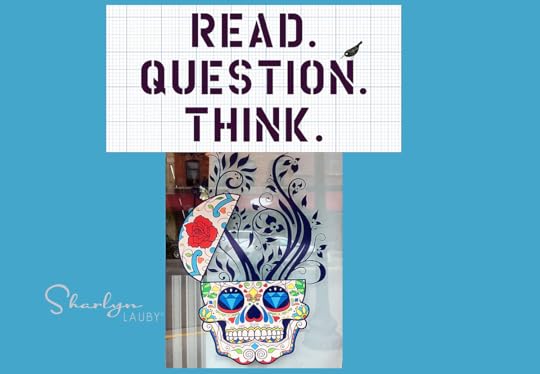
As business professionals, we often talk about company culture, employee engagement, and diversity. However, sometimes when we have these conversations, we talk about each topic separately. As in, “Company culture is important because…” or “Employee engagement will help your organization do…” and “Creating a diverse culture improves the business…”
At this year’s WorkHuman Conference, pioneered by Globoforce, author Adam Grant shared a roadmap for creating a culture of original thinkers. If you’re not familiar with Grant’s work, he is a professor in the Wharton School at the University of Pennsylvania. He’s also the author of three best-selling books including “Give and Take”. What I liked about Grant’s session was his practical and actionable suggestions.
5 Attributes of a Company Culture with Original Thinkers
We’ve heard many times that diversity of thought unleashes creativity and innovation in the workplace. But how do organizations make that happen? It’s not as simple as “Poof! Be creative now.” Here are five places to start:
Focus on retention. There are three key touchpoints where this can be done. 1) Do “entry” or new hire interviews. Find out what candidates think of the process. 2) Conduct stay interviews. Or managers could at least ask a stay interview question during one-on-one meetings. 3) Ask the right exit interview questions and encourage open dialogue.
Make the unfamiliar familiar. This means demystifying processes. Grant shared that it takes 10-20 exposures to a new idea for it to stick. Yet, we expect people to see or hear something once and that’s it. Companies can teach employees how to retain information by making connections with the familiar. For example, Warby Parker might be described as the “Zappos of eyeglasses” or the “Neflix of eyewear”.
Fight groupthink. There’s a well-worn saying, “Don’t bring me problems. Bring me solutions.” Truth is, people love to talk about problems. Grant suggests changing the mindset. “If you tell people ‘Don’t bring me problems. Bring me solutions.”, you’ll never hear the biggest problems. Let people simply identify problems then, work on solutions as a team.
Share stupid ideas. This relates to the last attribute. And, I believe this applies to every level of the organization. Organizations need to allow people the comfort of sharing ideas, regardless of their initial value. It would also be helpful to provide training to employees so they can work through their own ideas to overcome any challenges or obstacles.
Challenge leadership. I once worked with a CEO who crowdsourced his own performance review. He was comfortable with the feedback. I believe leadership exists at every level in the organization. But just because it exists doesn’t mean we shouldn’t try to improve our leadership capabilities. It also doesn’t mean we shouldn’t be prepared to listen to others.
Grant suggests that one way to start encouraging original thinking is by conducting a “Kill the Company” exercise. This could be great activity for your next strategic planning meeting. People might find dinosaurs cool, but organizations certainly don’t want to hire a company full of them.
Organizational Processes Matter
But let’s be clear. Killing the company doesn’t mean creating anarchy. It’s also not to simply pile on to it – as in, “let’s add this new ‘thing’ to our culture statement.” The goal is to find a way to regularly rework company culture. The key is to develop a good process for doing so. Good processes lead to good outcomes. Poor processes either over reward or over punish. Here are two examples I’ve seen before:
A bad process with a good outcome is the same as “achieving the goal but leaving body bags all along the way”. The wrong behaviors are rewarded.
A good process with a bad outcome is the same as “the only thing that matters is winning”. Individuals are punished for the outcome even if they did all the right things along the way.
Another thing that Grant addressed was values. I don’t know that we always think about values in a process context, but values can drive how processes are created and implemented. He suggested that organizations with 8-10 core values might be asking too much of employees. Is it fair to have a lot of core values? Maybe the better approach is to have 3-4 values, with one of those values being diversity. Also, take the time to rank values so everyone understands their relative importance.
There’s a growing school of thought that the term “culture fit” is synonymous with the “same as me” bias. And that organizations who are too focused on culture fit could be losing their ability to cultivate original thinkers. Instead of focusing on culture fit, it’s time for organizations to focus on creating a culture connection, because then everyone in the culture is tasked to do what’s best for the company.
Image captured by Sharlyn Lauby after speaking at the Healthcare Human Resources Association Conference in Stillwater, MN
The post Creating a Culture of Original Thinkers appeared first on hr bartender.






Sharlyn J. Lauby's Blog
- Sharlyn J. Lauby's profile
- 10 followers


